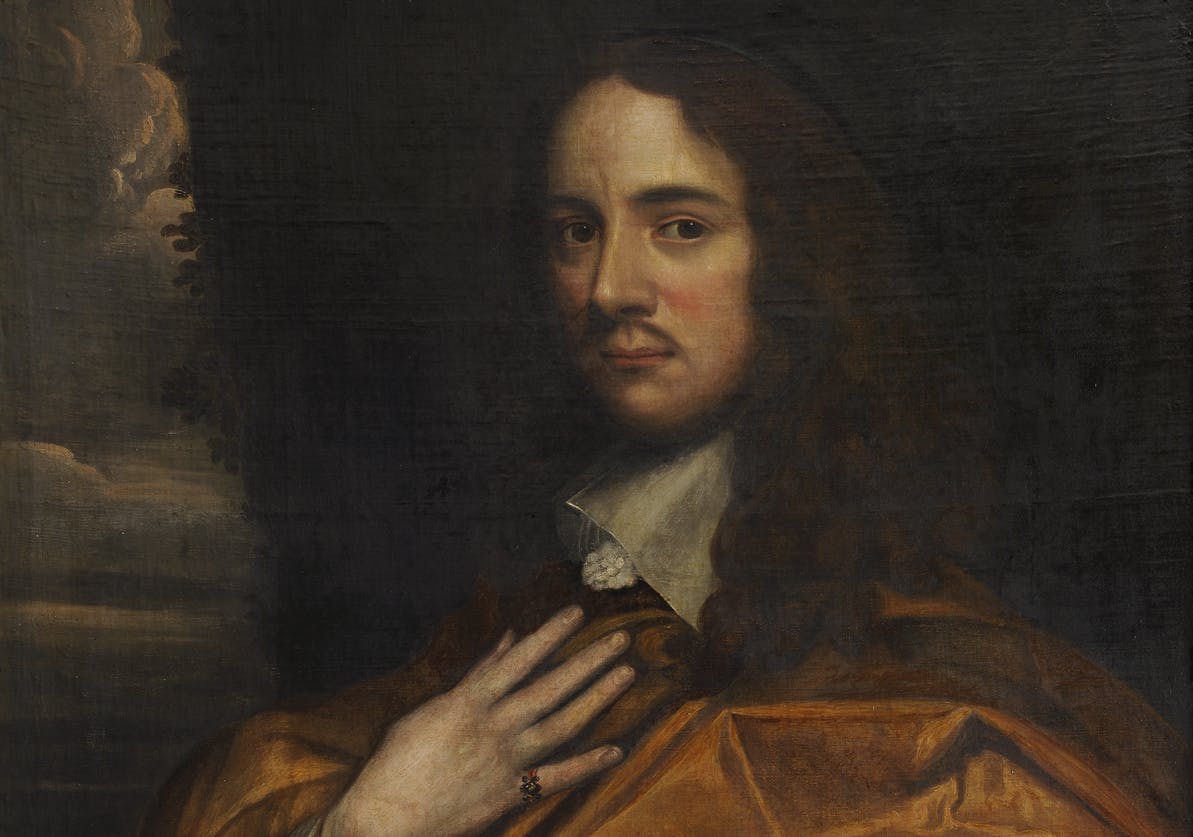Poem of the Day: ‘A Dialogue Between the Soul and the Body’
In a series of exchanges, long stanzas of rhymed tetrameter couplets, the Soul and the Body grouse and gripe like a married couple not making the best of a therapy session.

Andrew Marvell (1621–1678), heir to both the Metaphysical and the Cavalier strands that constitute the early seventeenth century in English poetry, crosses more than one path with another chameleonic Cavalier Metaphysical, Robert Herrick (1591–1674). It’s easy to confuse the two. While Herrick was thirty years older than Marvell, their lifespans overlap. Herrick was a Church of England clergyman, Marvell the son of a Church of England clergyman. Herrick’s most famous poem begins, “Gather ye rosebuds while ye may.” Marvell’s begins, “Come live with me and be my love.” We might be forgiven if, when asked to recite one or the other, we begin in confusion and iambic pentameter: “Come live with me, my rosebud, while ye may . . .”
Herrick had one foot in the church but the other at court. There he numbered among the Cavalier “Tribe of Ben” poets, with his friends John Suckling, Richard Lovelace, and Thomas Carew, all of whose poems at one time or another have appeared as Poem of the Day. He could write — cavalierly — about virgins gathering rosebuds, but also, as in a Poem of the Day from August 2022, about the existence of God. His “To Daffodils,” which appeared as Poem of the Day last May, integrates these two sides of him: the side concerned with seizing time, and the side concerned with gaining eternity.
Marvell is similarly a chameleon, though his impulses are less theological, more inclined toward political philosophy and satire. As a seventeenth-century figure, he looks back at the Cavaliers, in such poems as “The Fair Singer” and “The Mower to the Glow-Worms” (both previous Poems of the Day) as well as the famous carpe diem poem,“ To His Coy Mistress.” Yet his bent for satire situates him firmly in the Restoration era, with its political pamphlets and its rompy stage comedies. Today’s Poem of the Day, though it presents itself as a knotty metaphysical conundrum, belongs far more to this Restoration school than it does to the devotional poems of a Robert Herrick.
It is, in fact, a funny poem, in a way that Metaphysical poems seldom are. In a series of exchanges, long stanzas of rhymed tetrameter couplets, the Soul and the Body grouse and gripe like a married couple not making the best of a therapy session. They talk past each other continually, the Soul outing itself as a gnostic, an imprisoned airy spirit chained to the limiting physical senses, dragged through cycles of sickness and health, when all it wants is to be itself, flying free. The Body, on the other hand, would be a happy materialist if it weren’t for that nagging conscience saying sin, sin, sin all the time, draining its self-esteem. If we feel bad, says the Body, whose fault is that, I ask you? Can this marriage be saved? The poem gives the Body the final word, but leaves the problem unsolved.
A Dialogue Between the Soul and the Body
by Andrew Marvell
SOUL
O who shall, from this dungeon, raise
A soul enslav’d so many ways?
With bolts of bones, that fetter’d stands
In feet, and manacled in hands;
Here blinded with an eye, and there
Deaf with the drumming of an ear;
A soul hung up, as ’twere, in chains
Of nerves, and arteries, and veins;
Tortur’d, besides each other part,
In a vain head, and double heart.
BODY
O who shall me deliver whole
From bonds of this tyrannic soul?
Which, stretch’d upright, impales me so
That mine own precipice I go;
And warms and moves this needless frame,
(A fever could but do the same)
And, wanting where its spite to try,
Has made me live to let me die.
A body that could never rest,
Since this ill spirit it possest.
SOUL
What magic could me thus confine
Within another’s grief to pine?
Where whatsoever it complain,
I feel, that cannot feel, the pain;
And all my care itself employs;
That to preserve which me destroys;
Constrain’d not only to endure
Diseases, but, what’s worse, the cure;
And ready oft the port to gain,
Am shipwreck’d into health again.
BODY
But physic yet could never reach
The maladies thou me dost teach;
Whom first the cramp of hope does tear,
And then the palsy shakes of fear;
The pestilence of love does heat,
Or hatred’s hidden ulcer eat;
Joy’s cheerful madness does perplex,
Or sorrow’s other madness vex;
Which knowledge forces me to know,
And memory will not forego.
What but a soul could have the wit
To build me up for sin so fit?
So architects do square and hew
Green trees that in the forest grew.
___________________________________________
With “Poem of the Day,” The New York Sun offers a daily portion of verse selected by Joseph Bottum with the help of the North Carolina poet Sally Thomas, the Sun’s associate poetry editor. Tied to the day, or the season, or just individual taste, the poems are drawn from the deep traditions of English verse: the great work of the past and the living poets who keep those traditions alive. The goal is always to show that poetry can still serve as a delight to the ear, an instruction to the mind, and a tonic for the soul.
